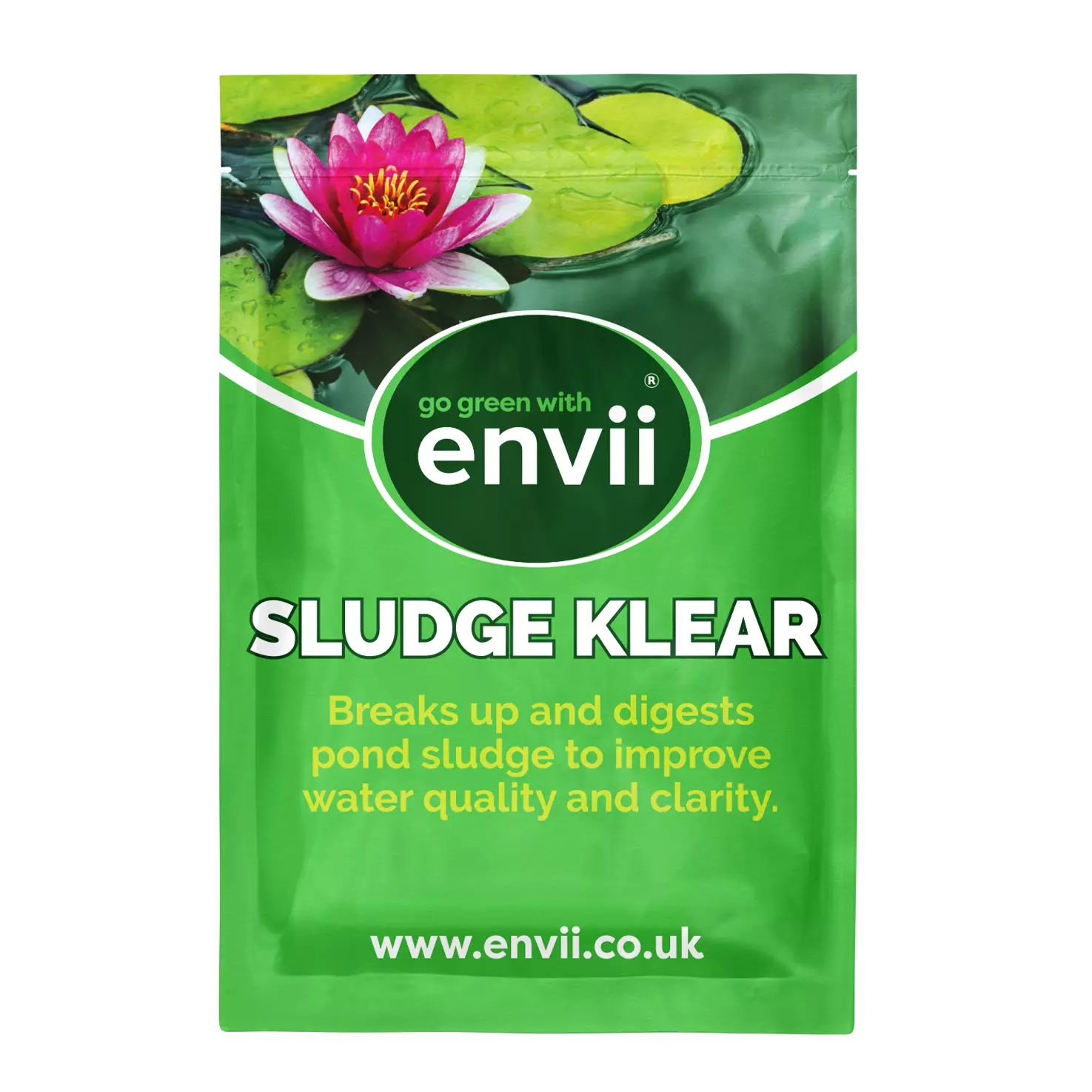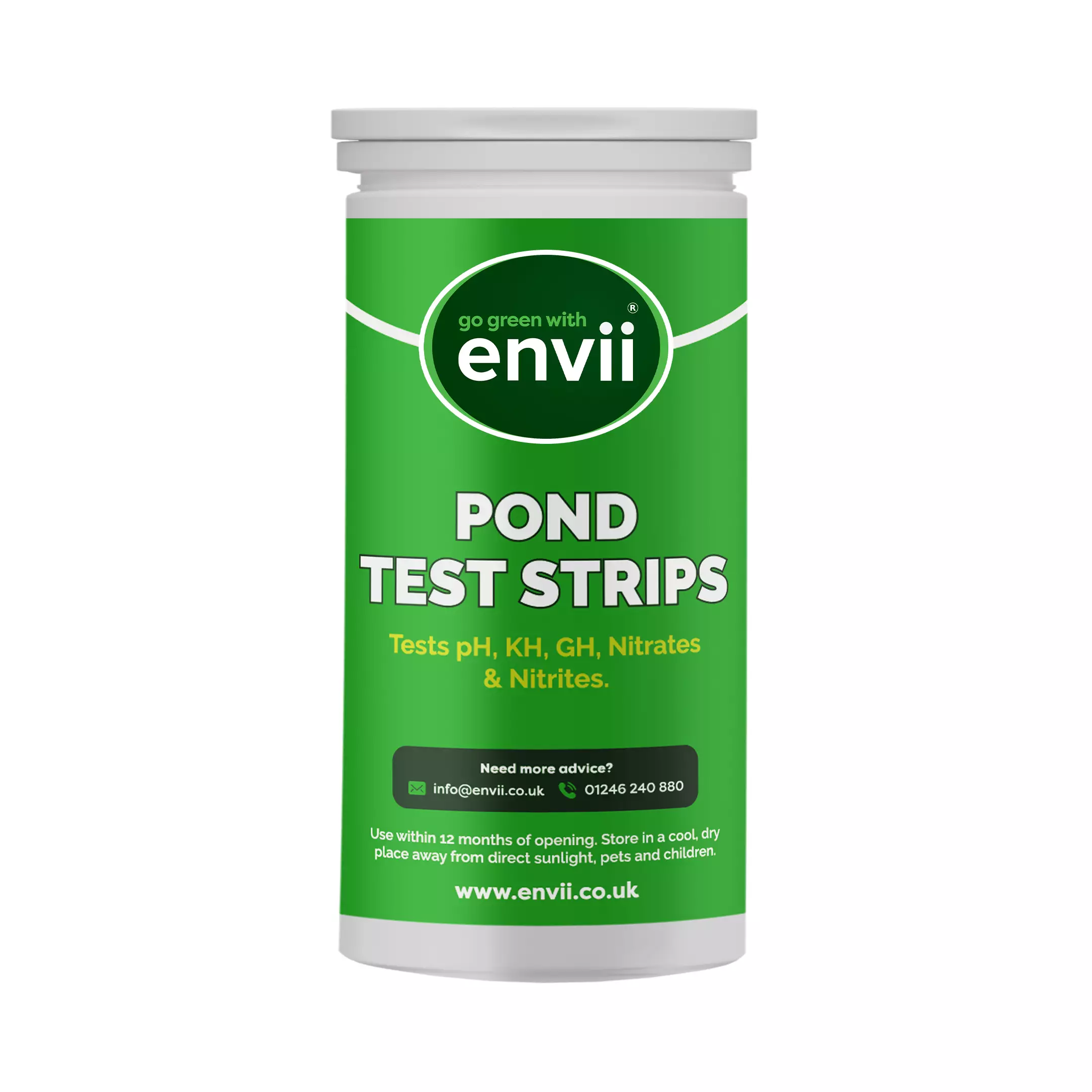If you’ve spotted a mysterious white foam on your pond’s surface and you’re wondering what it is, where it comes from, and whether it poses a risk to your fish, read on for more information on how to address it!
Jump to section:
What is pond foam?
The causes of pond foam
Test your water regularly
Controlling nutrient levels
Filtration and netting
5 step pond care routine [Video]
Summary
What is pond foam?
Seeing some foam or froth on a pond’s surface, especially around waterfalls or fountains, is not uncommon. This froth forms when water agitation creates bubbles, which can accumulate and persist on the water’s surface.
While minor froth might not be alarming, a consistently foamy pond could indicate underlying water quality issues.
Bubbles on the pond surface are often caused by dissolved organic compounds (DOCs), primarily made up of proteins. When the water is agitated, these compounds adhere to the bubbles’ surfaces, stabilising them and making them less likely to pop.
These DOCs typically result from the accumulation of organic matter that has entered the pond. There are many sources of these compounds, and with a few key pond management tips, you can prevent their build-up in the water.
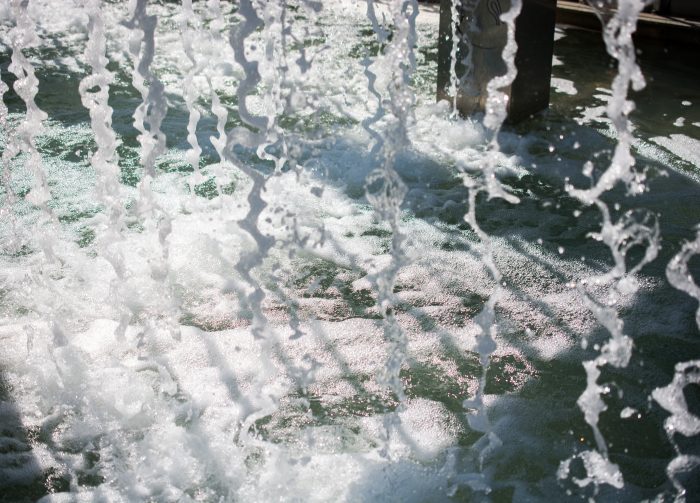
The causes of pond foam
So why is my pond foamy? When organic matter enters the pond, it settles at the bottom and forms a layer known as pond sludge. Over time, this sludge breaks down, releasing organic compounds into the water. Contributing sources to pond sludge include:
(1) Overfeeding fish means wasted food sinks to the bottom contributing to sludge.
(2) Overstocking fish – excess fish excretions in a smaller space means that the pond bacteria cannot naturally process it.
(3) Blocked or ineffective pond filters fail to adequately remove organic particles and debris that will add to sludge.
(4) Decaying plant material such as fallen leaves further add to the organic load.
Using a bacterial treatment such as Envii Sludge Klear to break down sludge may initially result in increased froth due to the release of these dissolved organic compounds (DOCs). However, over the long term, reducing sludge levels promotes a biological balance and improves water clarity by lowering nutrient concentrations.
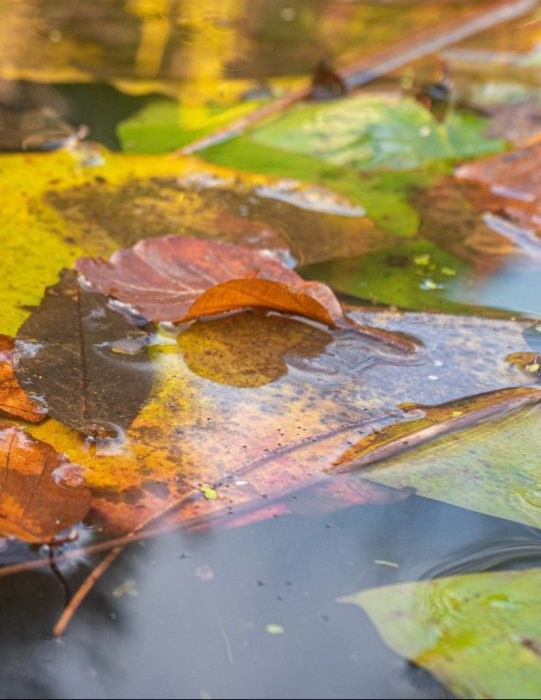
Ideal pond parameters:
- pH levels: 7.5-8.5
- KH levels: 3-6 dKH
- GH levels: 3-15 DH
- Nitrate levels: < 25 ppm
- Nitrite levels: < 0.5 ppm
Envii pond test strips are valuable tools that provide accurate measurements with one pack providing weekly measurements for up to 6 months, making them essential for proactive pond management.
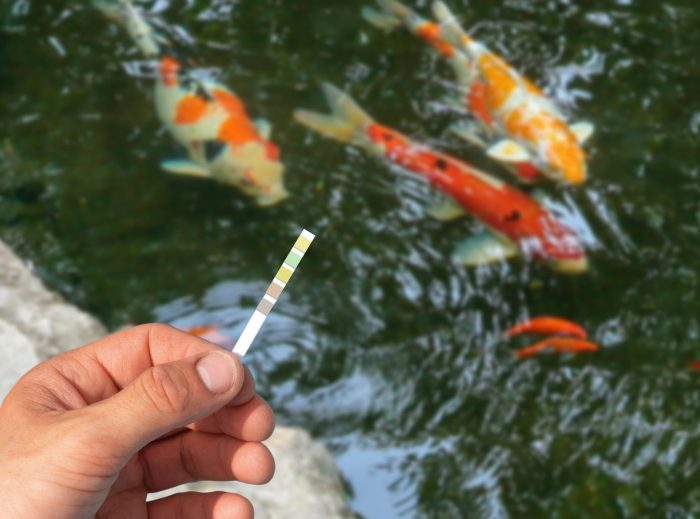
Controlling nutrient levels
To manage excessive nutrient levels effectively, prioritize controlling fish feeding practices to prevent overfeeding and minimize waste production.
Adjust feeding amounts based on fish needs and seasonal variations to maintain a healthy nutrient balance within the pond. Avoid overstocking fish to prevent overcrowding and reduce the accumulation of organic waste and associated DOCs.
Additionally, ensuring that netting is installed over the pond will stop leaves and plant debris from entering the water, adding to the waste.
Adequate oxygen levels are essential for fish health and the proper functioning of beneficial bacteria, which play a vital role in decomposing organic matter and maintaining water clarity.

Filtration and netting
Installing and maintaining a robust filtration system is crucial for removing organic waste and enhancing water quality.
Mechanical, biological, and UV sterilisation components effectively filter out debris, support beneficial bacteria growth, and promote water oxygenation.
Envii filter feed tablets aid the filter box by introducing billions of beneficial bacteria, with the aim of reducing nitrites, ammonia and organic waste within the filter box.
Skimming off excess pond froth not only improves the pond’s aesthetic appeal but also prevents the accumulation of dissolved organic compounds on the water’s surface.
Regularly removing froth helps reduce nutrient loads and supports a cleaner pond environment.
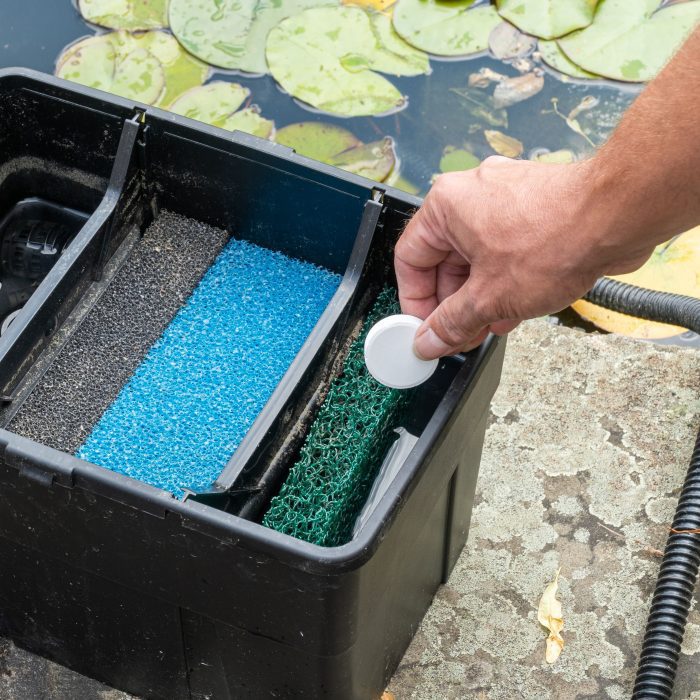
The 5 Step Routine for a Healthy & Clear Pond
For sludge specific information – check out our blog for top tips on preventing pond sludge.
Summary
In conclusion, managing pond froth is crucial for a healthy ecosystem. Excessive froth often indicates high levels of DOCs from sources like fish waste and decaying plants.
Effective management includes regulating fish feeding, maintaining proper stocking levels, using filtration systems, and regularly skimming off excess froth.
These practices, along with routine water testing and products like Envii Sludge Klear, help maintain water quality and support a thriving pond environment.
Related Products
-

Envii Sludge Klear
£14.99Reduces sludge in ponds and clears murky water.Add to Basket -

Envii Pond Test Strips
£10.99Easy to use Pond Test Strips measuring 5 key water parametersAdd to Basket -

Envii Filter Feed
£15.99Use beneficial bacteria to clean filters and remove nitrites.Add to Basket

 Call us on 01246 240880
Call us on 01246 240880 Sign-up and receive 10% off
Sign-up and receive 10% off
